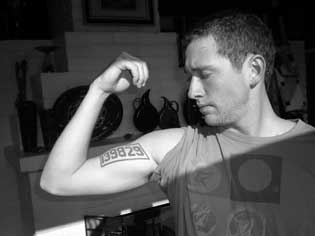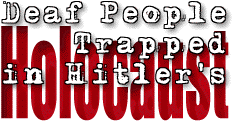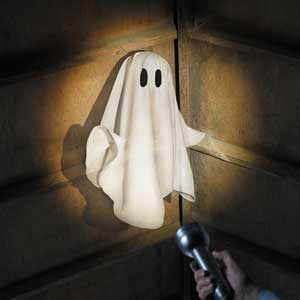
Credit: Meg James
Oof. That’s a tough one. Many high schools have Holocaust studies as part of their curriculum, but many Jewish children will be introduced to the Holocaust much earlier. Whether in Hebrew school, from friends or relatives, or happening upon a book or article.
My son Jack, who is six years old, does not know about the Holocaust. He does not know that he is a third generation survivor on his father’s side. He doesn’t know that his great grandfather died in Auschwitz or that his grandmother, who he calls Savta, was born in a concentration camp. Heck, he doesn’t even know what a concentration camp is. He will learn these things someday, but when, I don’t know. It’s not only part of his heritage, but also his personal ancestry. He is living testament to Hitler’s failure to eradicate an entire race of people. But for now, he’s just into the “Cars2” movie and riding his scooter.
This article from the Jewish Chronicle, “Mummy, What was the Holocaust?” caught my eye, especially this excerpt:
Judith Vandervelde, an educator at London’s Jewish Museum, runs a seminar entitled, “How do we talk to our children about the Holocaust?”
She says: “The philosophy behind teaching young children about the Holocaust is that you take them up to the gates of Auschwitz and no further.
“Holocaust education is no longer about sitting them down for that difficult conversation. There are a lot of children’s books that touch upon it and children hear about it from a younger age.
“Bad Holocaust education, that is shocking and frightening, damages the child’s Jewish identity, their sense of the world and how they perceive others.”
She advises parents to be prepared and only go as far as they feel their child can cope with, ideally by years five or six.
“Like sex education, Holocaust education has to be supported at home. It depends on the child’s maturity, their family background and their experiences of death.
“Be led by them and answer questions as simply as possible. If they want more, they will ask.”
Jack knows that I’m a writer and that I’m “writing a book about Savta,” but he doesn’t actually know what the book is about. Once I get a contract and this thing takes off in real time, he will want to know more. And I will want to share it with him, but within reason, of course. Suggestions from the aforementioned article will help me figure it out. Among the recommendations are:
- Focus on the stories of individuals, especially if your family was affected.
- Treat it as an ongoing dialogue, not a one-off conversation
- Use books and museums to introduce your child to this dark era of history
- The Holocaust means something different to everyone. The lesson you teach from it might be about strength, tolerance or anti-racism. See this as an opportunity to instil your child with your values.
 Putting aside any discomfort you may have with the idea of ranking Holocaust cinema, what do you think of this blogger’s Top 10 List (click link for an explanation of each of his choices)? Then use comments space below to share your thoughts:
Putting aside any discomfort you may have with the idea of ranking Holocaust cinema, what do you think of this blogger’s Top 10 List (click link for an explanation of each of his choices)? Then use comments space below to share your thoughts:








